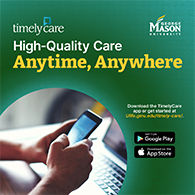By: Christie Michals, Development Associate, Safe Children Coalition
“To the world you may be just one person, but to one person you may be the world.” – Dr. Seuss
Think about how you spend your days – whether you are in class, at work, or maybe a combination of both. Who are the people that you are surrounded by? Your friends are deeply connected to your happiness, and there are many well-being benefits of friendships.
Evidence shows that social connection is a psychological need, leading humans to find greater life satisfaction. Humans are made for connections; that is how our brains are wired.
In a time when social connections may be limited to virtual engagements, loneliness is a factor we are all prone to experience. In recognizing the groups you are a part of, either through school or work, strive to find, build, and appreciate more trusted relationships. Meaningful connections can lead you to more enjoyment and greater success.
Benefits of Friendship at School
Gallup identifies four factors that impact student success and well-being: engagement, hope, belonging, and social and emotional learning. Effective learning is possible when students are immersed in a positive, supportive environment, and when they feel connected. By feeling a bond with others, learners are more likely to participate, contribute, or take initiative in the classroom. Group work allows students to work on teams, which leads to greater accountability, in addition to peer to peer discipline. Teamwork has been shown to boost moods, increase interpersonal skills, and allow members to gain new perspectives.
Study groups can also create positive connections, leading to beneficial outcomes. As reported in the Greater Good Magazine, “for marginalized students in particular, attending to students’ sense of belonging in school can help them fit in socially and academically and avoid dropping out.” Furthermore, to support engagement, “students who feel like they belong in school earn higher grades and opt into and succeed in more difficult courses.”
Benefits of Friendship at Work
Greater engagement is possible in the workplace as well, when workers feel they belong and have friendships with their colleagues. In the report “Why a Best Friend at School Matters for Students and Teachers”, author Tim Hodges wrote, “without a best friend at work, the chances of being engaged in your job are just one in 12.” This finding is true across industry lines, and it also impacts retention rates. Gallup’s workplace statistics show there is a 48% greater likelihood that people with low engagement and well-being will leave your company. The reality is, employees expect their jobs to be more than a paycheck. Organizational success can improve when workers are better connected and invested in their relationships.
In the Harvard Business Review podcast episode, “Why Work Friends are Worth It”, Shasta Nelson describes three components to flourishing friendships at work: positivity, consistency, and vulnerability. Positivity leads to healthy, feel good connections, consistency creates safety, and vulnerability allows us to be known by others. Some might be familiar with the term “frolleague,” someone who is a colleague and also a friend. Frolleagues are impactful relationships because they offer support by checking in often and listening well.
Foster Friendly Environments
If you are an instructor, read “How to Help Students Feel a Sense of Belonging During the Pandemic” to learn more about research-based suggestions to foster connection in the classroom.
If you are a supervisor, professor or leader of a group, consider the following tips suggested by Gallup to establish a genuine support system:
- Promote open communication and collaboration: An inclusive environment allows for ideas to flow freely and for friendships to cultivate through psychological safety.
- Encourage people to get to know one another: When intentional expectations are made, cross-functional groups can engage with, and learn from, one another.
- Develop and participate in social activities: Prioritize opportunities for members to gather and spend time together based around non-work purposes – even through small acts, such as lunch breaks.
Additional Resources
- The article “Friendships: Enrich Your Life and Improve Your Health” by the Mayo Clinic
- The article “8 Benefits of Studying with Friends” from the Australian National Institute of Management and Commerce
- The article “Caring for Students’ Wellbeing in a Coronavirus World” from Gallup
- The article “Why a Best Friend at School Matters for Students and Teachers” by Gallup
- The Frientimacy website from friendship expert Shasta Nelson
Write one of these Thriving Together Series features! We’re looking for contributions on all topics related to well-being. Read other Thriving Together Series articles here and contact us at [email protected] for guidelines. Thank you for helping our Mason community thrive together online!





















